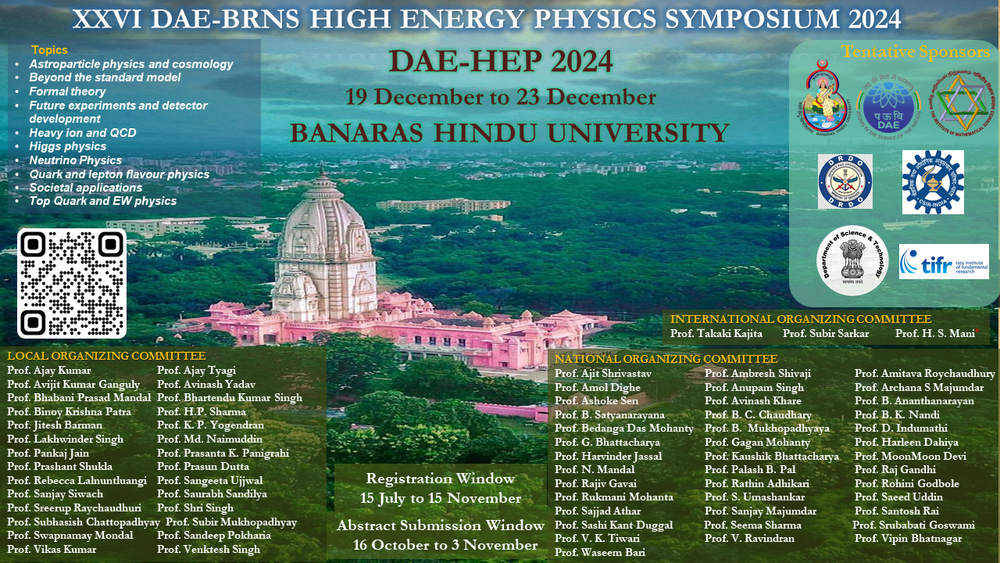Speaker
Description
The forward-backward multiplicity correlations between particles produced at different pseudorapidities provide valuable insights into the underlying dynamics of multi-particle production in high-energy collisions. These correlations, believed to be largely unaffected by final-state effects, offer a unique window into the initial stages of the collision. This study investigates the correlation strength ($b_{corr}$) between forward ($n_F$) and backward ($n_B$) charged particle multiplicities. The dependence of $b_{corr}$ on the pseudorapidity gap and window width separating the forward and backward regions is systematically explored. Furthermore, the analysis extends to correlations between positively and negatively charged particles in the respective forward and backward intervals.
To quantify the presence and strength of inter-particle correlations, the strongly intensive fluctuation measure ($\Sigma$) is employed. $\Sigma$, which reduces to unity in the absence of correlations, is calculated using $n_F$ and $n_B$ as extensive variables. The influence of color reconnection on these correlations is also considered. The proton-proton collisions at Large Hadron Collider (LHC) energy ($\sqrt{s} $ = 7 TeV) are simulated using the Pythia8 event generator to assess the impact of these processes on the observed correlation patterns. These results have been compared with the ALICE experimental results.
This comprehensive analysis aims to shed light on the complex interplay of mechanisms governing multi-particle production in high-energy collisions, ultimately contributing to a deeper understanding of the Quark-Gluon Plasma and the fundamental nature of strong interactions.
| Field of contribution | Phenomenology |
|---|

